Abstract
1. Increased arterial pressure increases baroreceptor activity but activity declines (i.e. baroreceptors adapt) as the pressure is maintained at the higher level. The purpose of this study was to investigate the role of a 4-aminopyridine (4-AP)-sensitive K+ current in causing baroreceptor adaptation. 2. Multi- and single fibre recordings of baroreceptor activity were obtained from the vascularly isolated carotid sinus in anaesthetized dogs during step increases in carotid sinus pressure sustained for periods up to 5 min. 3. Baroreceptor activity increased with the rise in pressure, declined markedly over the first minute, and continued to decline at a slower rate during the remainder of the 5 min period of elevated pressure. Exposure of the isolated carotid sinus to 4-AP (10(-5) and 10(-4) M) attenuated adaptation in a dose-dependent and reversible manner (P < 0.05). 4-AP attenuated the gradual decline in single fibre activity and also prevented derecruitment or dropout of fibres that occurred over time. 4-AP did not alter peak nerve activity measured within the first 2 s of the pressure step. 4. Ouabain (5 x 10(-7)-10(-6) M), an inhibitor of Na+,K(+)-ATPase, increased baroreceptor activity but did not attenuate baroreceptor adaptation. 5. Neither 4-AP nor ouabain altered the distensibility of the carotid sinus as measured with sonomicrometer crystals suggesting that the agents act directly on the nerve endings. 6. The results suggest that activation of a 4-AP-sensitive K+ current contributes significantly to baroreceptor adaptation with little or no contribution of Na+,K(+)-ATPase.
Full text
PDF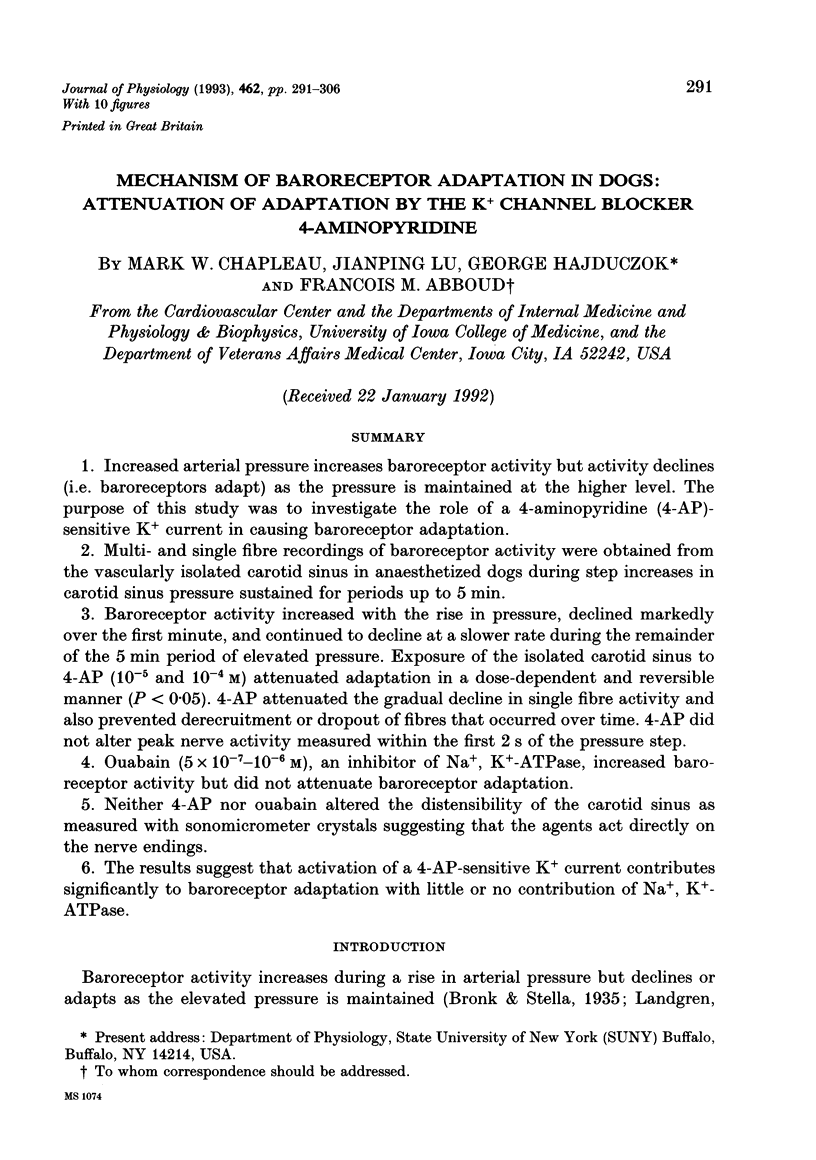
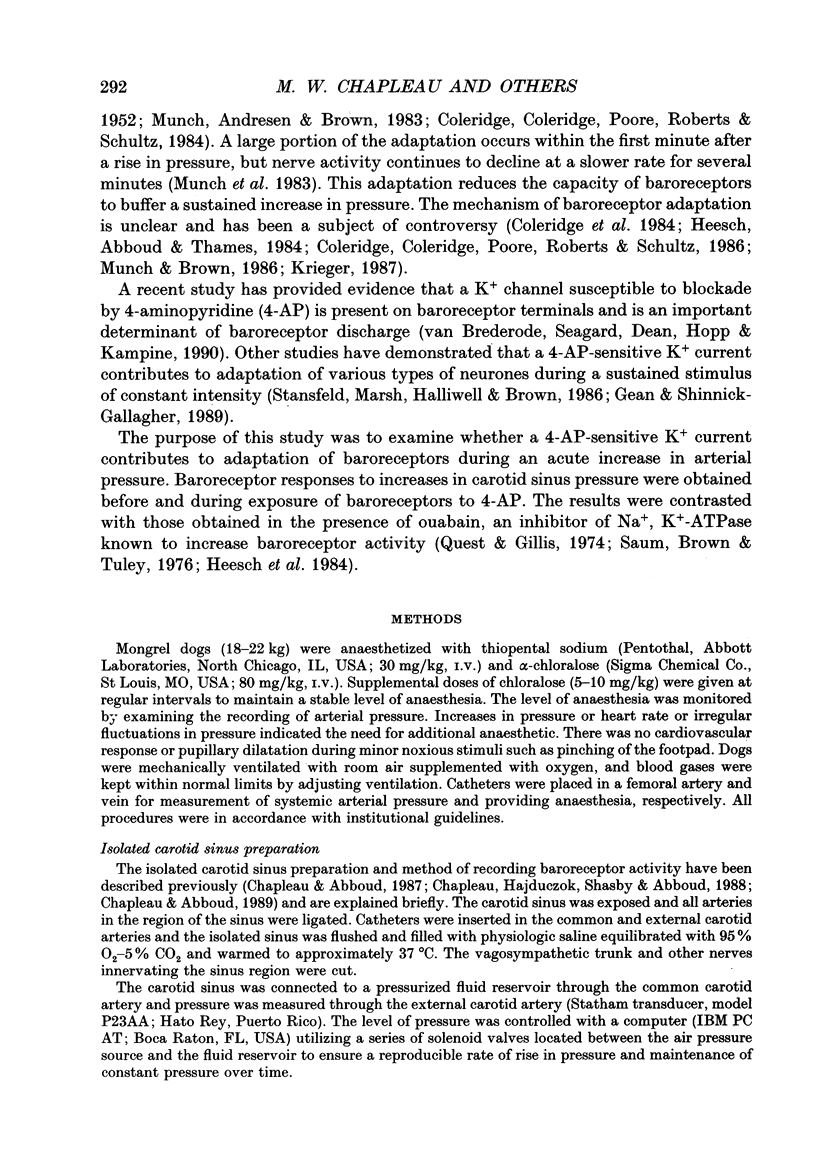
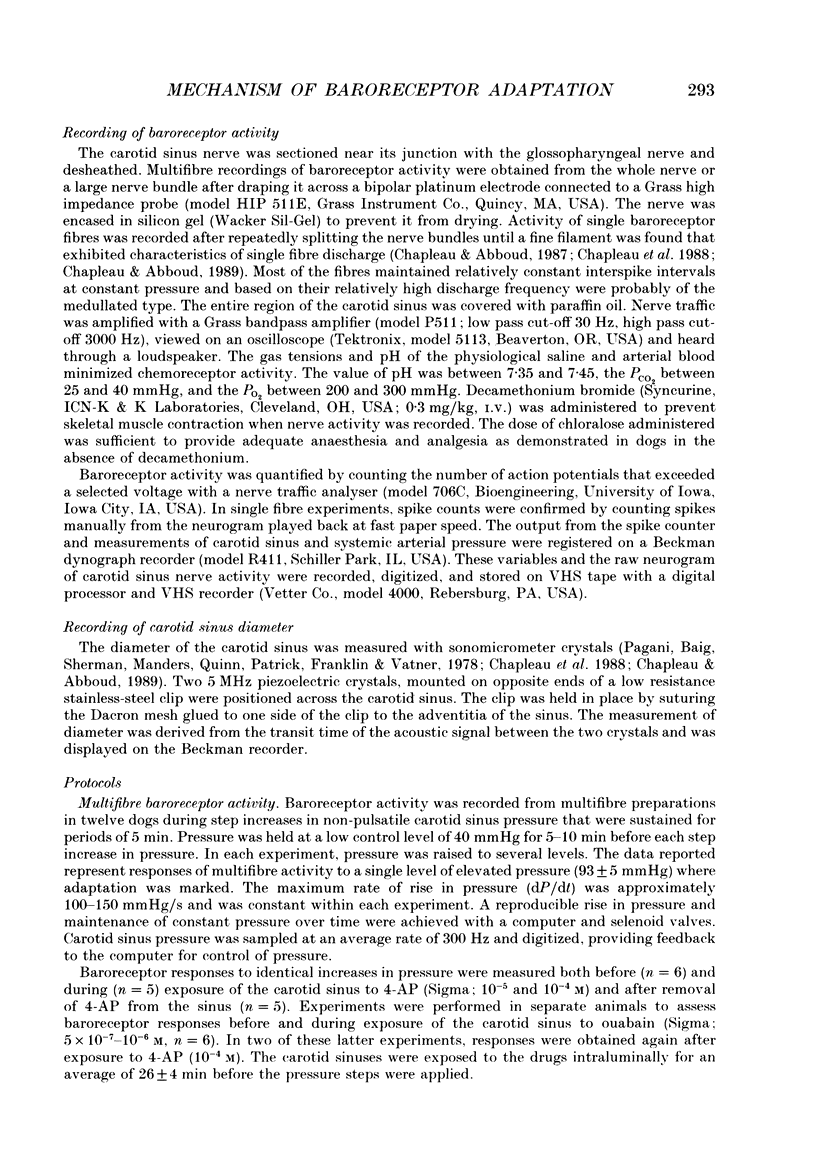
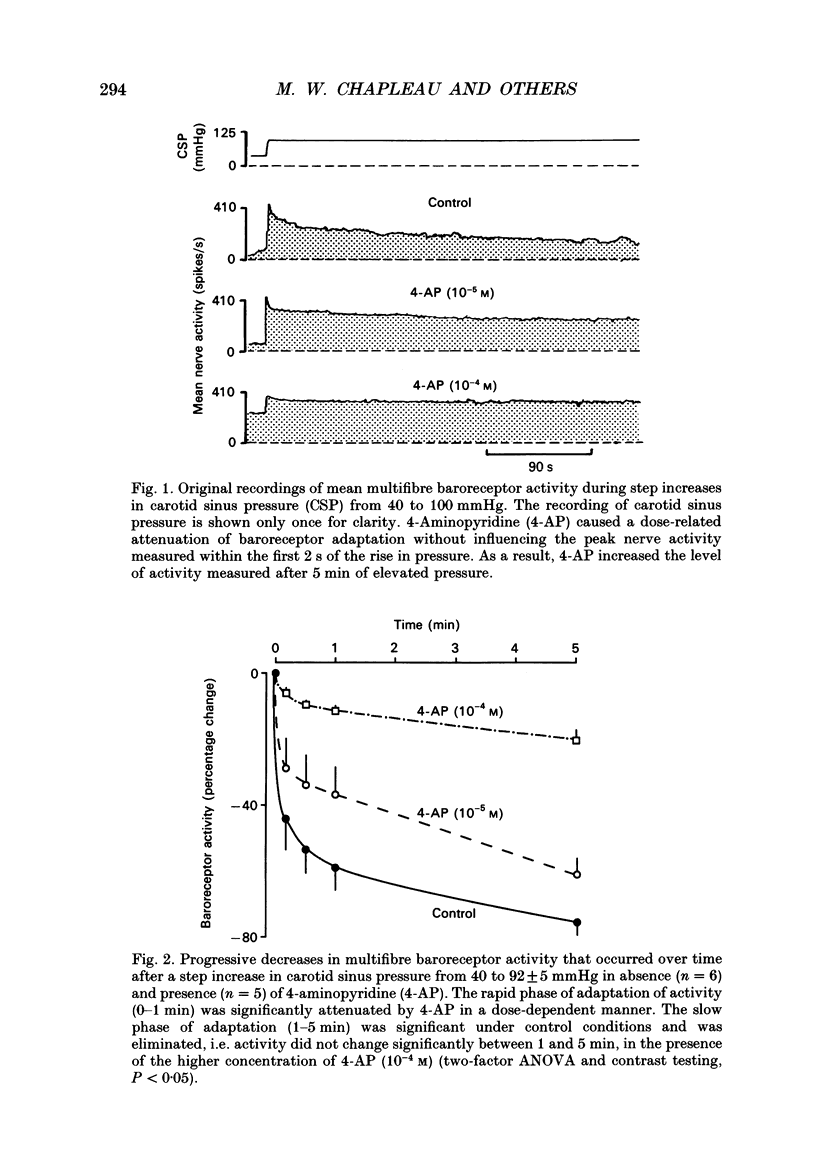
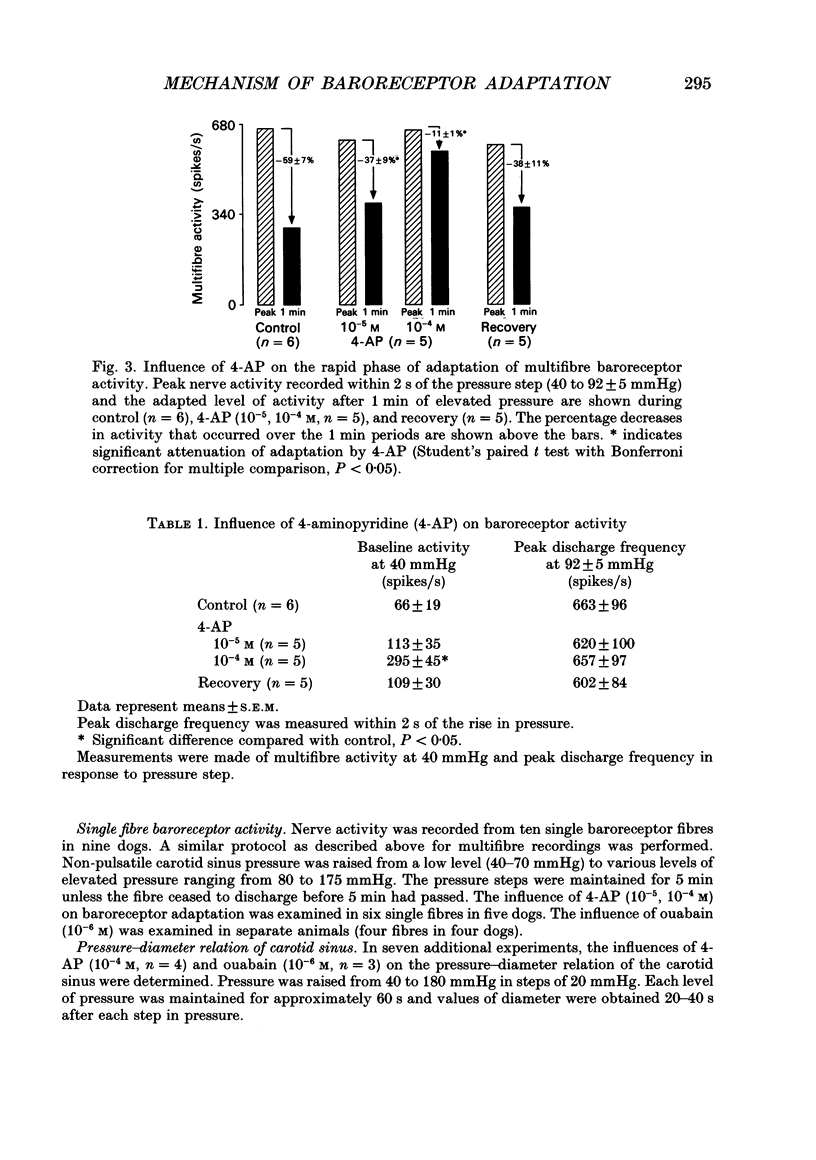
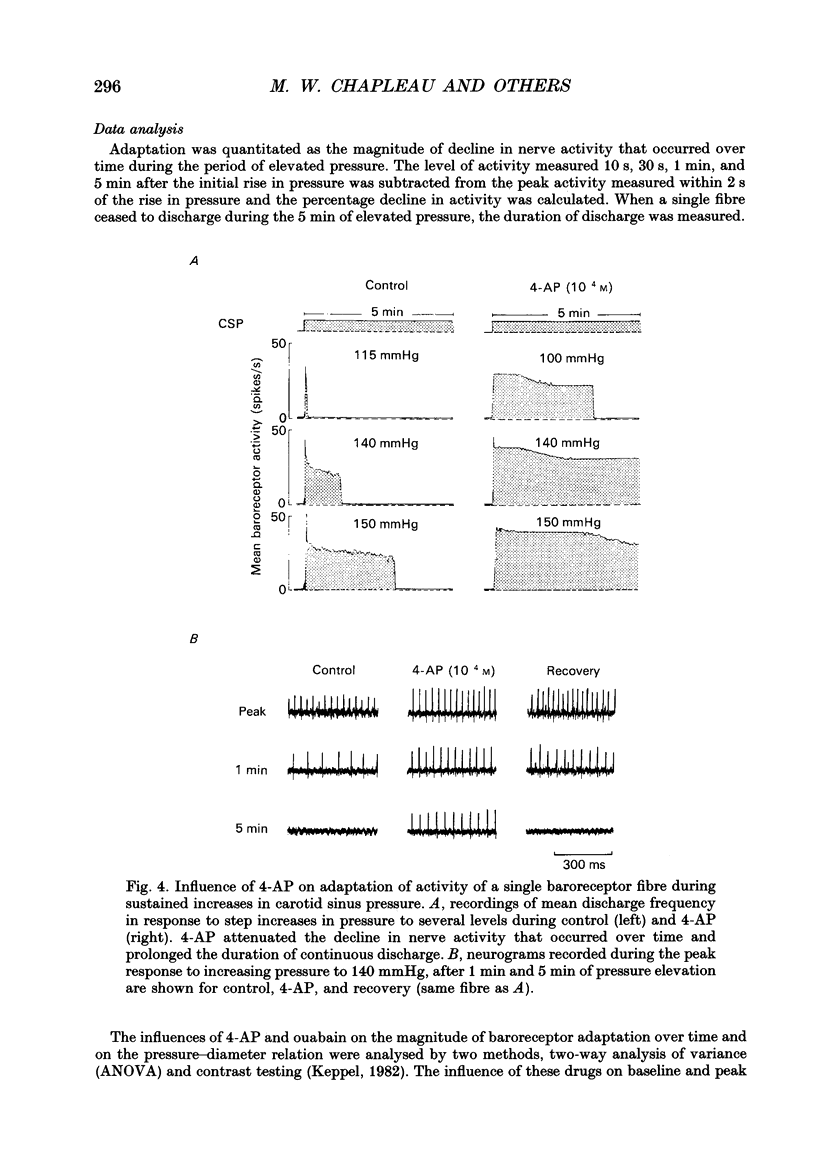
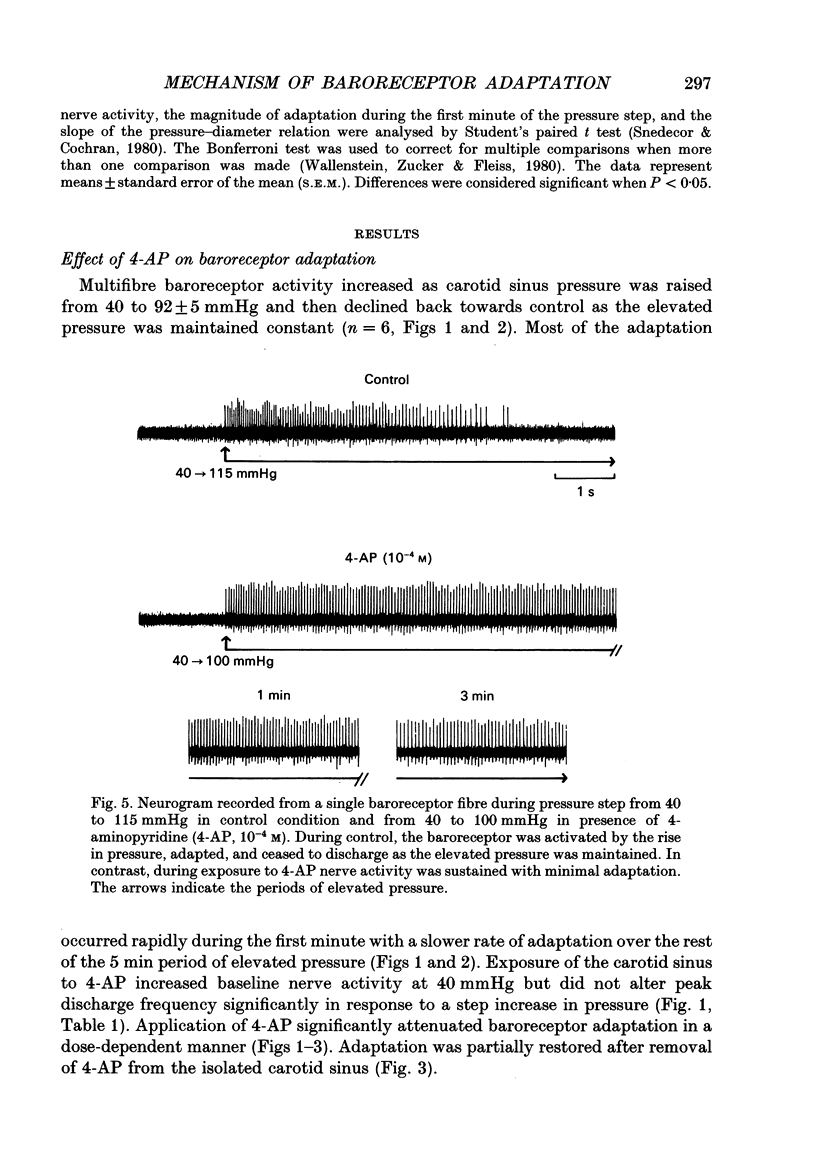
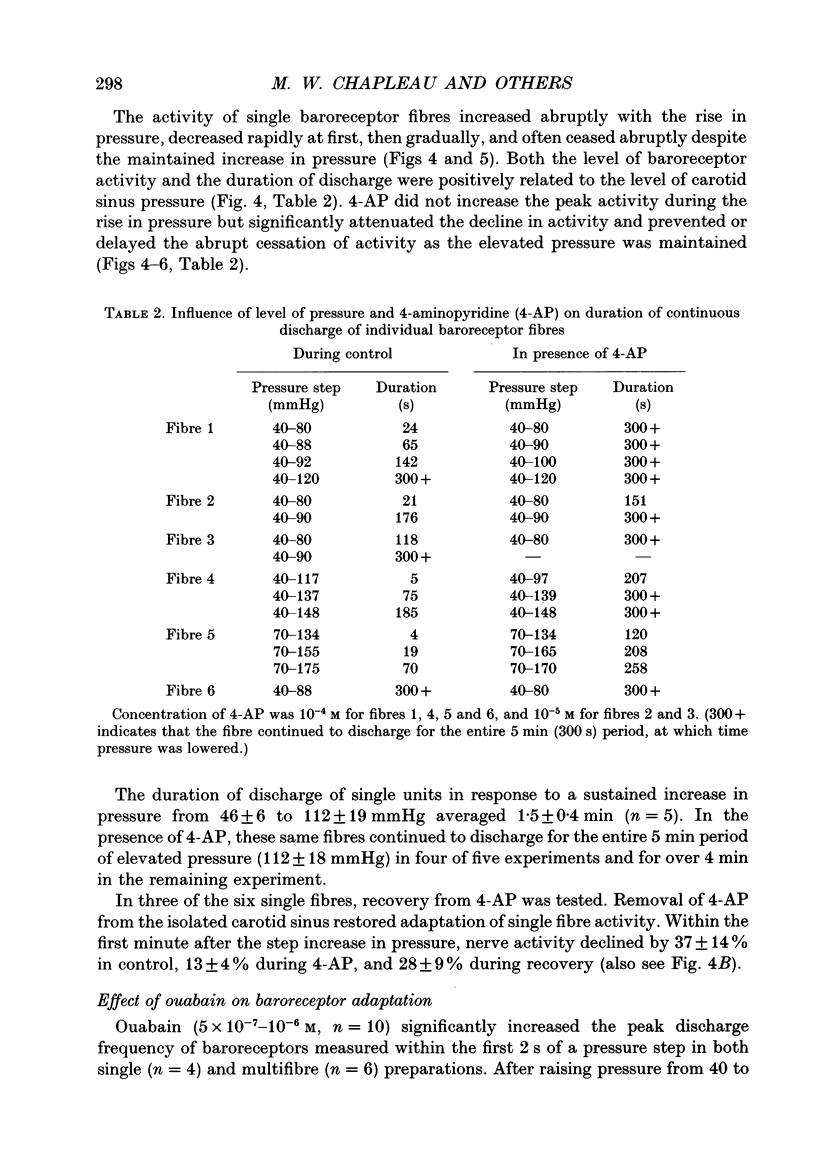
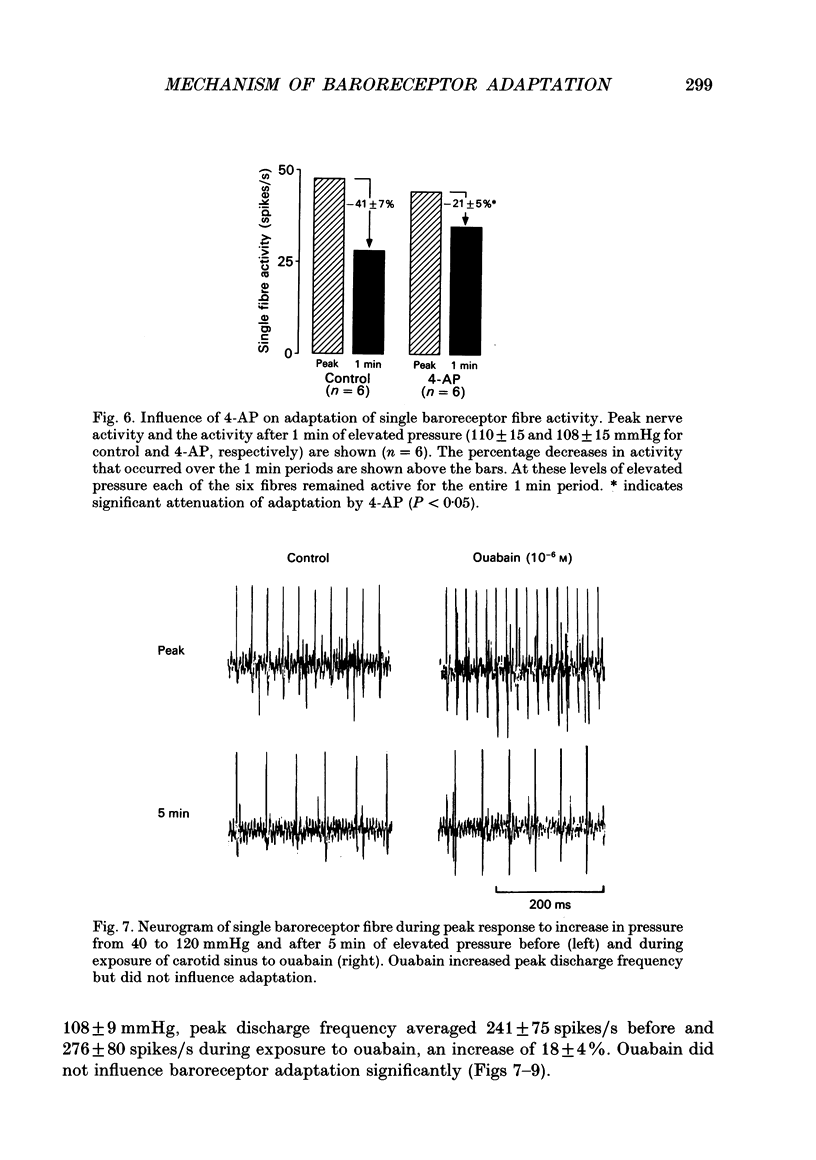
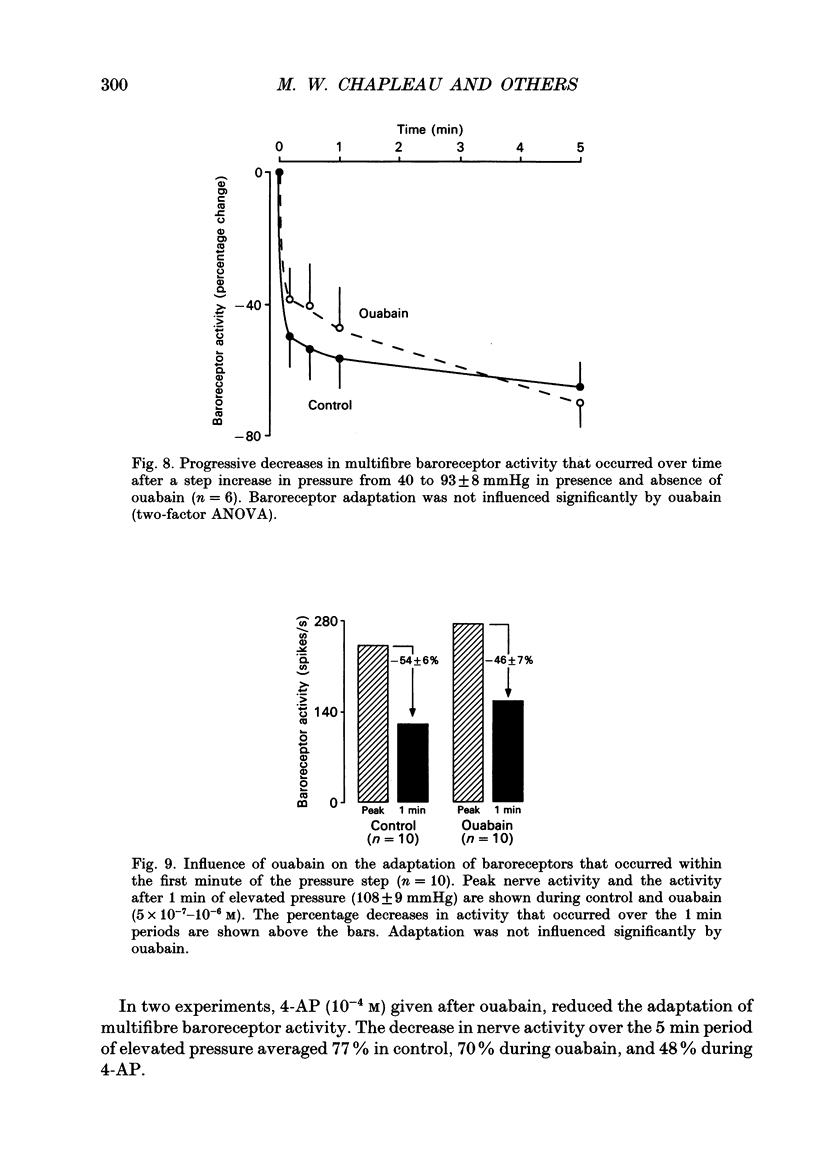
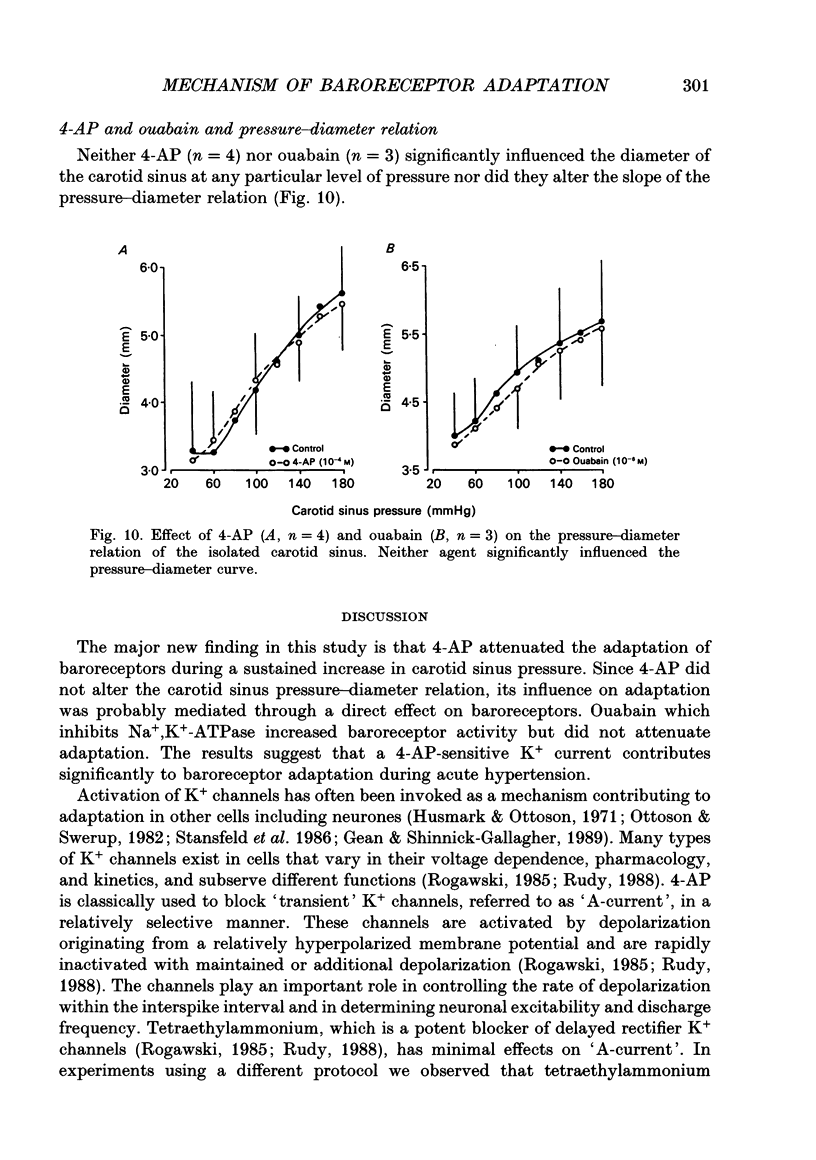
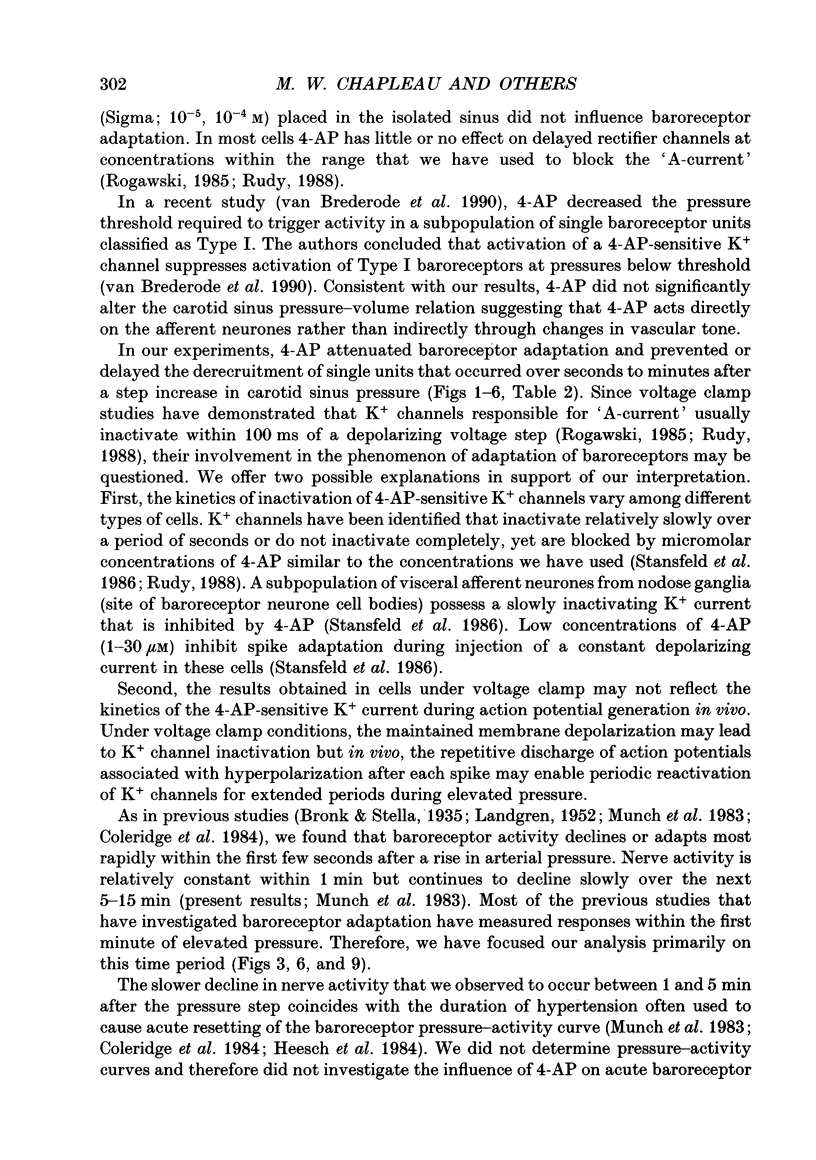
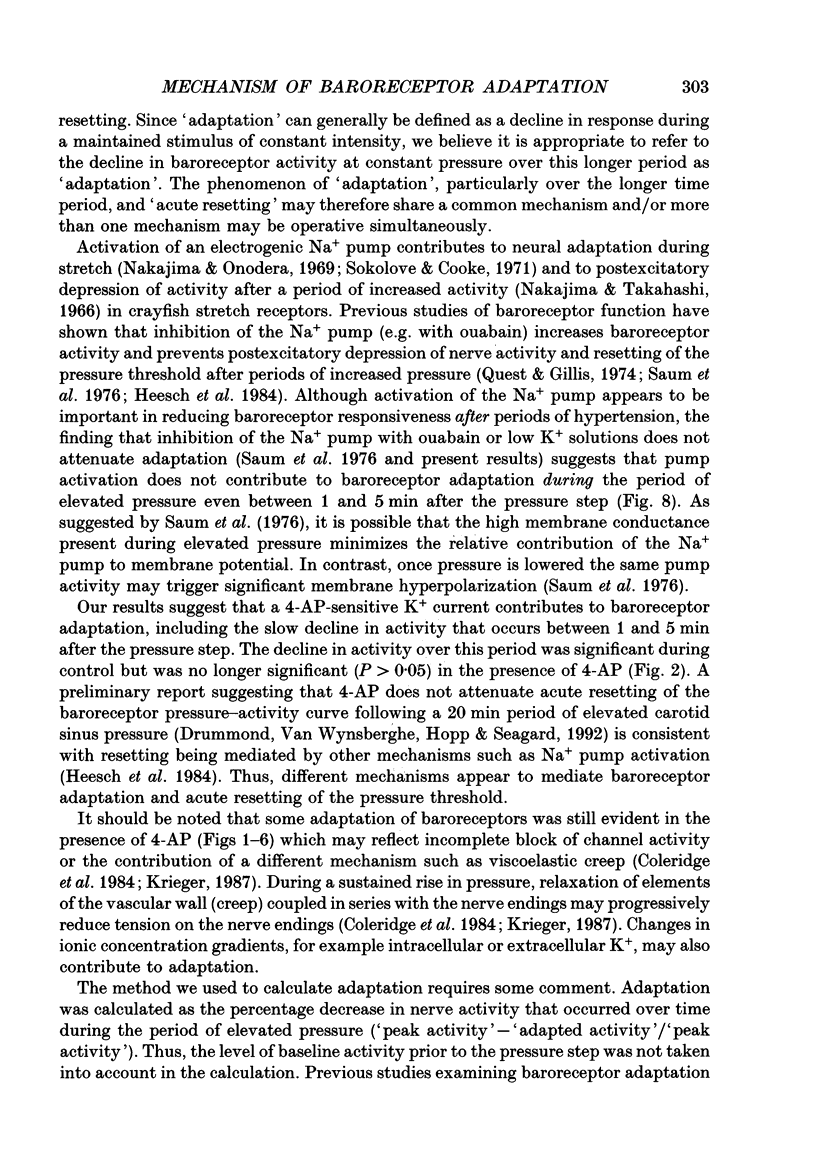
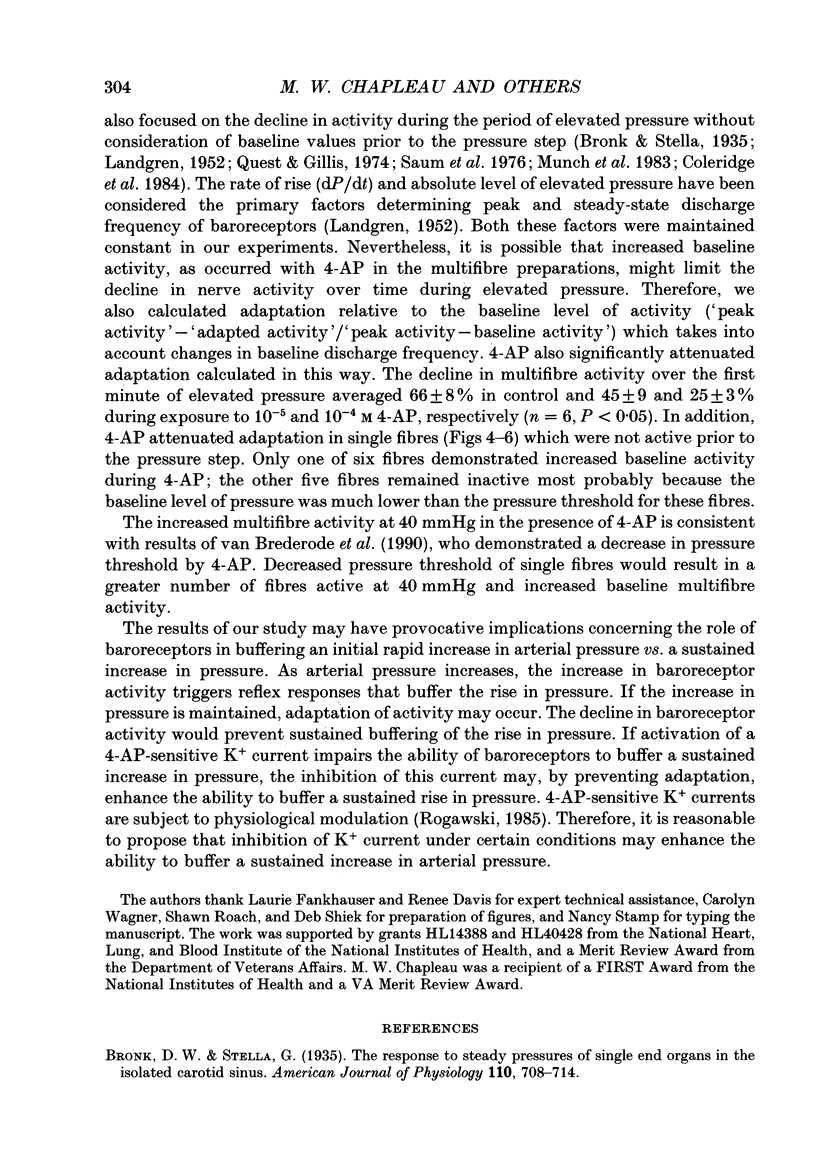
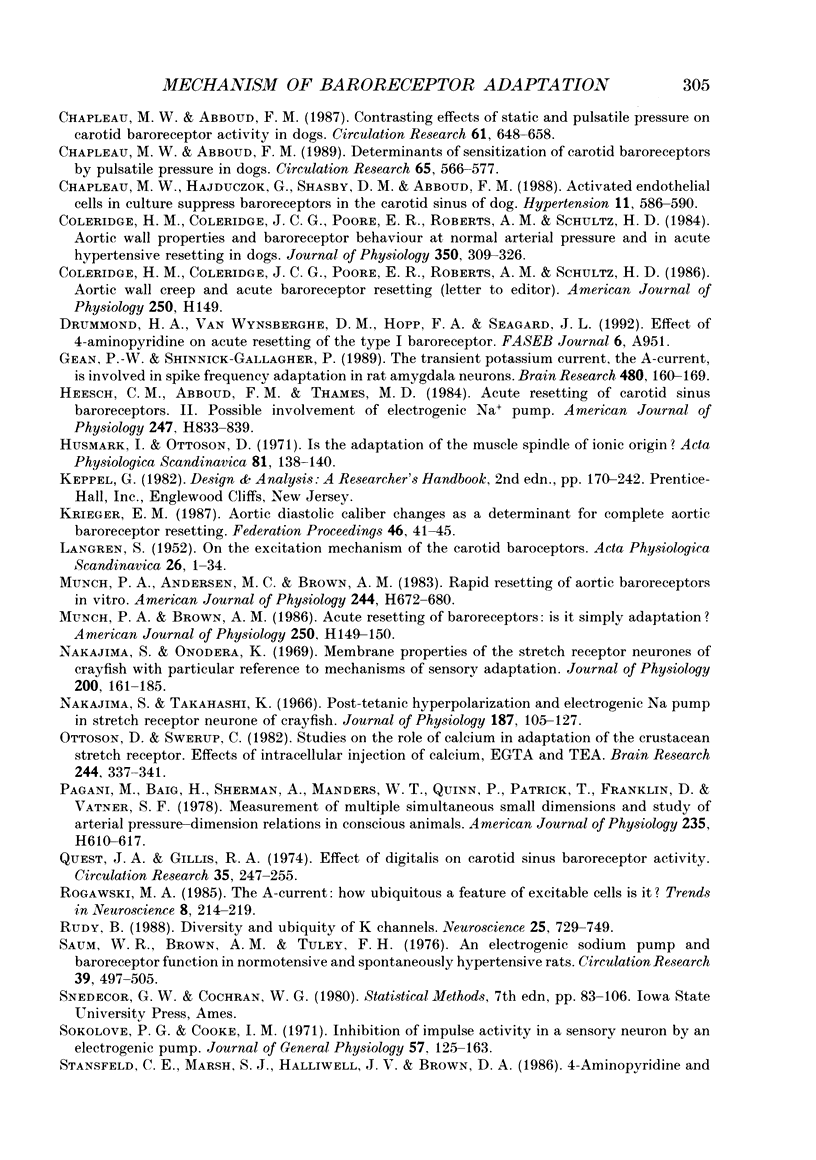
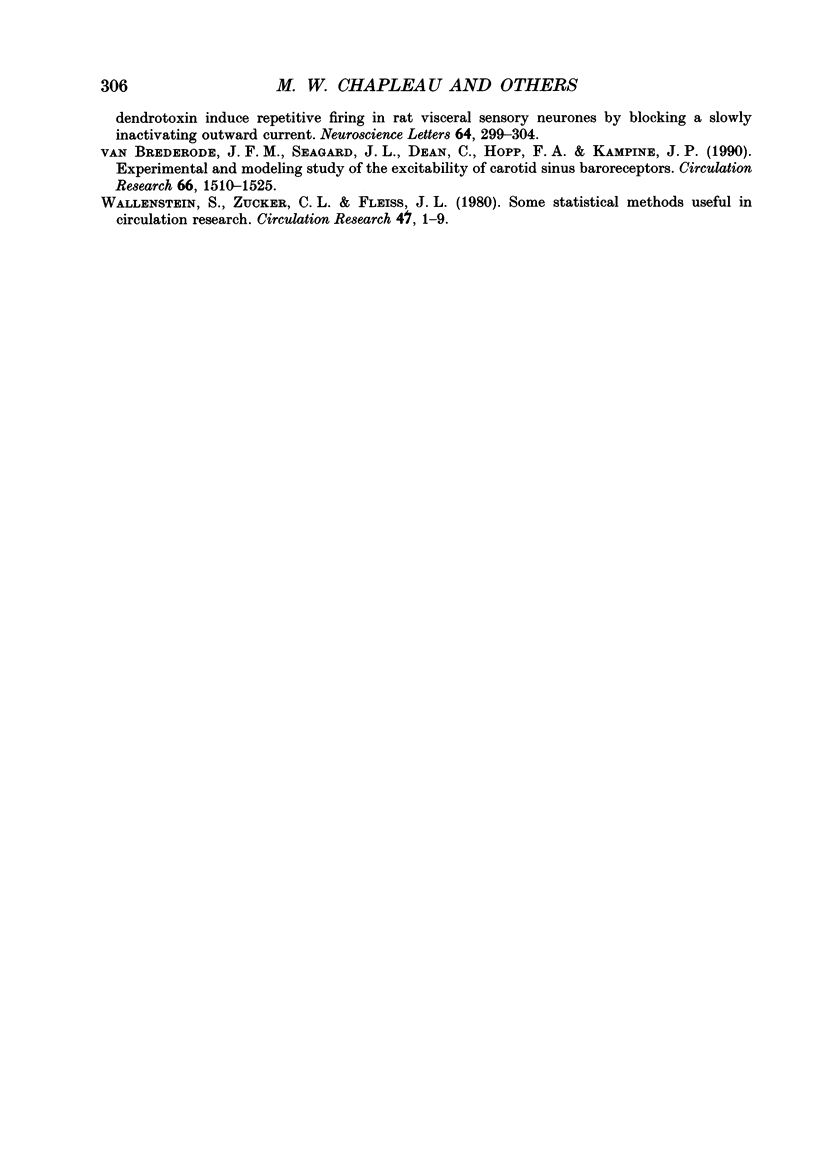
Selected References
These references are in PubMed. This may not be the complete list of references from this article.
- Chapleau M. W., Abboud F. M. Contrasting effects of static and pulsatile pressure on carotid baroreceptor activity in dogs. Circ Res. 1987 Nov;61(5):648–658. doi: 10.1161/01.res.61.5.648. [DOI] [PubMed] [Google Scholar]
- Chapleau M. W., Abboud F. M. Determinants of sensitization of carotid baroreceptors by pulsatile pressure in dogs. Circ Res. 1989 Sep;65(3):566–577. doi: 10.1161/01.res.65.3.566. [DOI] [PubMed] [Google Scholar]
- Chapleau M. W., Hajduczok G., Shasby D. M., Abboud F. M. Activated endothelial cells in culture suppress baroreceptors in the carotid sinus of dog. Hypertension. 1988 Jun;11(6 Pt 2):586–590. doi: 10.1161/01.hyp.11.6.586. [DOI] [PubMed] [Google Scholar]
- Coleridge H. M., Coleridge J. C., Poore E. R., Roberts A. M., Schultz H. D. Aortic wall creep and acute baroreceptor resetting. Am J Physiol. 1986 Jan;250(1 Pt 2):H149–H150. doi: 10.1152/ajpheart.1986.250.1.H149. [DOI] [PubMed] [Google Scholar]
- Coleridge H. M., Coleridge J. C., Poore E. R., Roberts A. M., Schultz H. D. Aortic wall creep and acute baroreceptor resetting. Am J Physiol. 1986 Jan;250(1 Pt 2):H149–H150. doi: 10.1152/ajpheart.1986.250.1.H149. [DOI] [PubMed] [Google Scholar]
- Coleridge H. M., Coleridge J. C., Poore E. R., Roberts A. M., Schultz H. D. Aortic wall properties and baroreceptor behaviour at normal arterial pressure and in acute hypertensive resetting in dogs. J Physiol. 1984 May;350:309–326. doi: 10.1113/jphysiol.1984.sp015203. [DOI] [PMC free article] [PubMed] [Google Scholar]
- Gean P. W., Shinnick-Gallagher P. The transient potassium current, the A-current, is involved in spike frequency adaptation in rat amygdala neurons. Brain Res. 1989 Feb 20;480(1-2):160–169. doi: 10.1016/0006-8993(89)91578-3. [DOI] [PubMed] [Google Scholar]
- Heesch C. M., Abboud F. M., Thames M. D. Acute resetting of carotid sinus baroreceptors. II. Possible involvement of electrogenic Na+ pump. Am J Physiol. 1984 Nov;247(5 Pt 2):H833–H839. doi: 10.1152/ajpheart.1984.247.5.H833. [DOI] [PubMed] [Google Scholar]
- Husmark I., Ottoson D. Is the adaptation of the muscle spindle of ionic origin? Acta Physiol Scand. 1971 Jan;81(1):138–140. doi: 10.1111/j.1748-1716.1971.tb04883.x. [DOI] [PubMed] [Google Scholar]
- Krieger E. M. Aortic diastolic caliber changes as a determinant for complete aortic baroreceptor resetting. Fed Proc. 1987 Jan;46(1):41–45. [PubMed] [Google Scholar]
- LANDGREN S. On the excitation mechanism of the carotid baroceptors. Acta Physiol Scand. 1952 Jul 17;26(1):1–34. doi: 10.1111/j.1748-1716.1952.tb00889.x. [DOI] [PubMed] [Google Scholar]
- Munch P. A., Andresen M. C., Brown A. M. Rapid resetting of aortic baroreceptors in vitro. Am J Physiol. 1983 May;244(5):H672–H680. doi: 10.1152/ajpheart.1983.244.5.H672. [DOI] [PubMed] [Google Scholar]
- Nakajima S., Onodera K. Membrane properties of the stretch receptor neurones of crayfish with particular reference to mechanisms of sensory adaptation. J Physiol. 1969 Jan;200(1):161–185. doi: 10.1113/jphysiol.1969.sp008687. [DOI] [PMC free article] [PubMed] [Google Scholar]
- Nakajima S., Takahashi K. Post-tetanic hyperpolarization and electrogenic Na pump in stretch receptor neurone of crayfish. J Physiol. 1966 Nov;187(1):105–127. doi: 10.1113/jphysiol.1966.sp008078. [DOI] [PMC free article] [PubMed] [Google Scholar]
- Ottoson D., Swerup C. Studies on the role of calcium in adaptation of the crustacean stretch receptor. Effects of intracellular injection of calcium, EGTA and TEA. Brain Res. 1982 Jul 29;244(2):337–341. doi: 10.1016/0006-8993(82)90093-2. [DOI] [PubMed] [Google Scholar]
- Pagani M., Baig H., Sherman A., Manders W. T., Quinn P., Patrick T., Franklin D., Vatner S. F. Measurement of multiple simultaneous small dimensions and study of arterial pressure-dimension relations in conscious animals. Am J Physiol. 1978 Nov;235(5):H610–H617. doi: 10.1152/ajpheart.1978.235.5.H610. [DOI] [PubMed] [Google Scholar]
- Rudy B. Diversity and ubiquity of K channels. Neuroscience. 1988 Jun;25(3):729–749. doi: 10.1016/0306-4522(88)90033-4. [DOI] [PubMed] [Google Scholar]
- Saum W. R., Brown A. M., Tuley F. H. An electrogenic sodium pump and baroreceptor function in normotensive and spontaneously hypertensive rats. Circ Res. 1976 Oct;39(4):497–505. doi: 10.1161/01.res.39.4.497. [DOI] [PubMed] [Google Scholar]
- Sokolove P. G., Cooke I. M. Inhibition of impulse activity in a sensory neuron by an electrogenic pump. J Gen Physiol. 1971 Feb;57(2):125–163. doi: 10.1085/jgp.57.2.125. [DOI] [PMC free article] [PubMed] [Google Scholar]
- Stansfeld C. E., Marsh S. J., Halliwell J. V., Brown D. A. 4-Aminopyridine and dendrotoxin induce repetitive firing in rat visceral sensory neurones by blocking a slowly inactivating outward current. Neurosci Lett. 1986 Mar 14;64(3):299–304. doi: 10.1016/0304-3940(86)90345-9. [DOI] [PubMed] [Google Scholar]
- Wallenstein S., Zucker C. L., Fleiss J. L. Some statistical methods useful in circulation research. Circ Res. 1980 Jul;47(1):1–9. doi: 10.1161/01.res.47.1.1. [DOI] [PubMed] [Google Scholar]
- van Brederode J. F., Seagard J. L., Dean C., Hopp F. A., Kampine J. P. Experimental and modeling study of the excitability of carotid sinus baroreceptors. Circ Res. 1990 Jun;66(6):1510–1525. doi: 10.1161/01.res.66.6.1510. [DOI] [PubMed] [Google Scholar]


